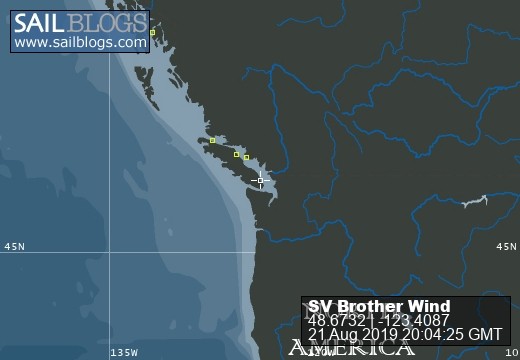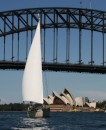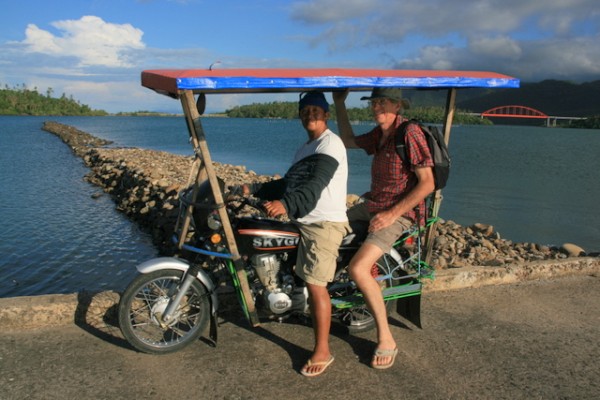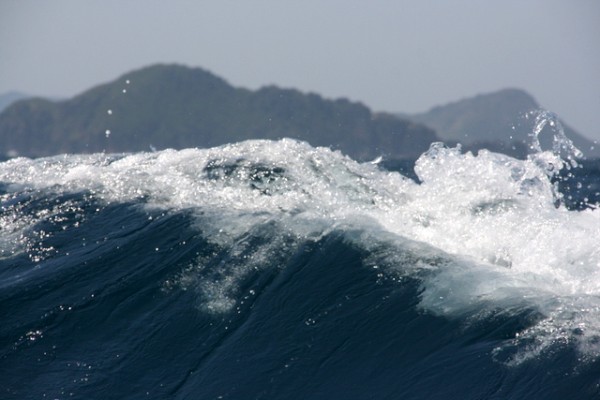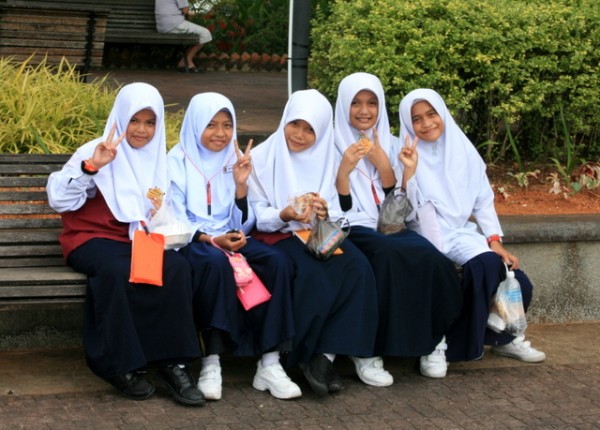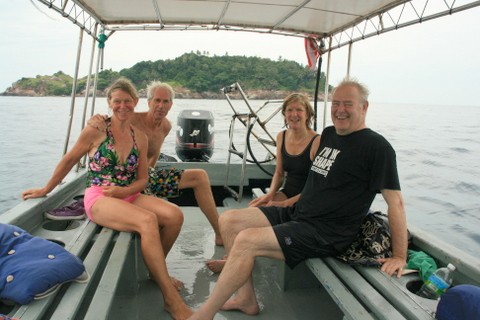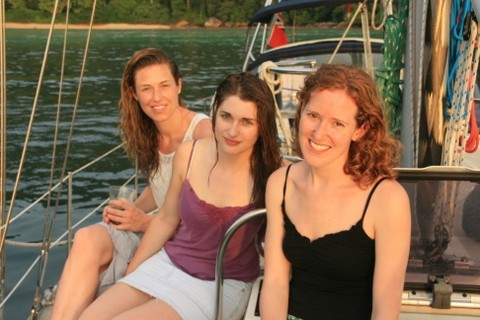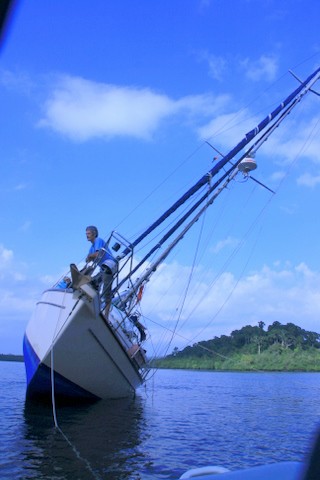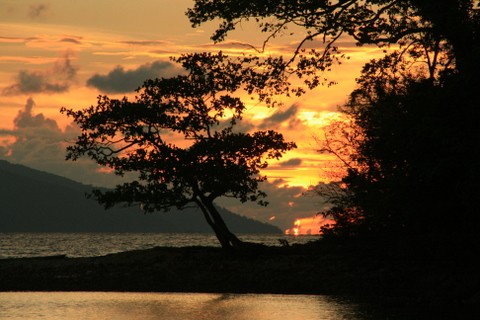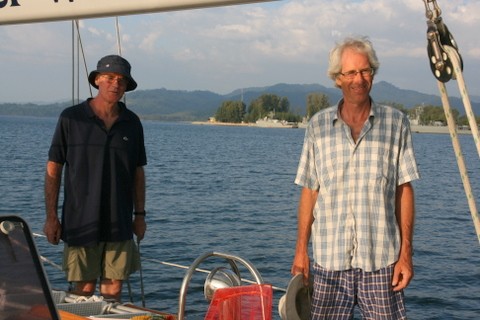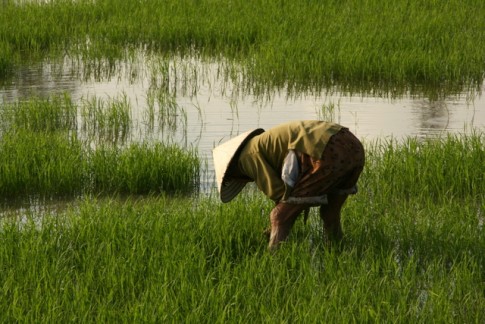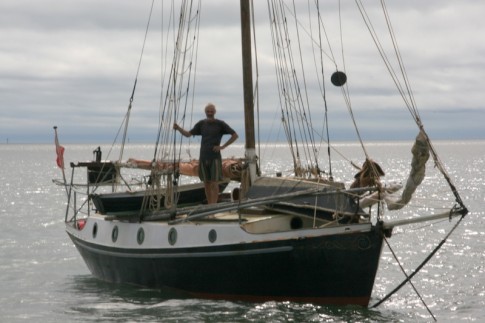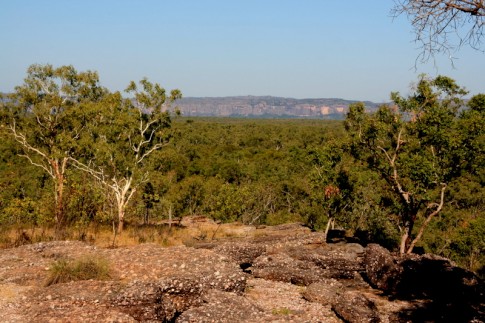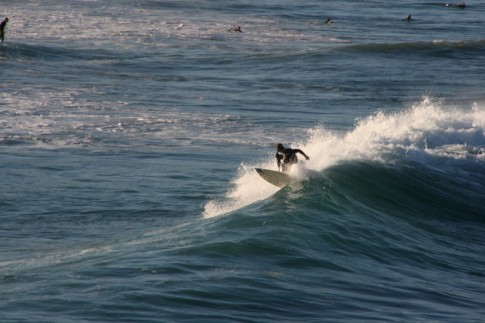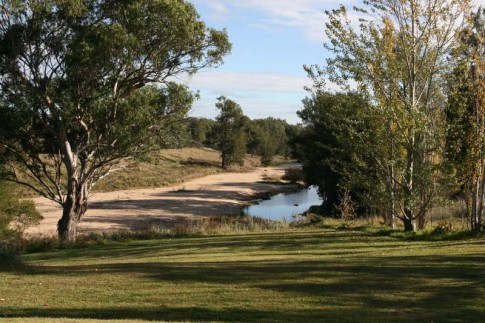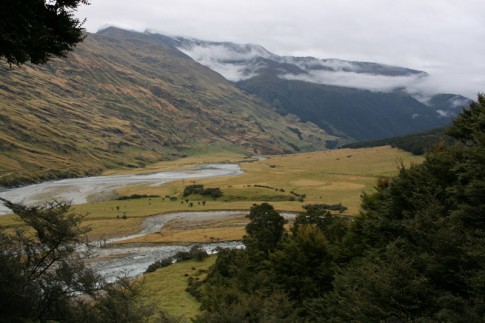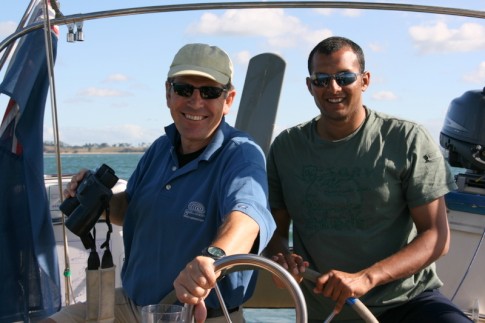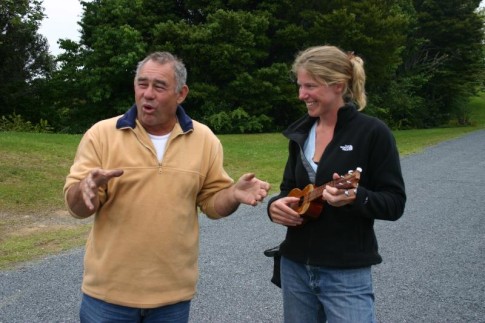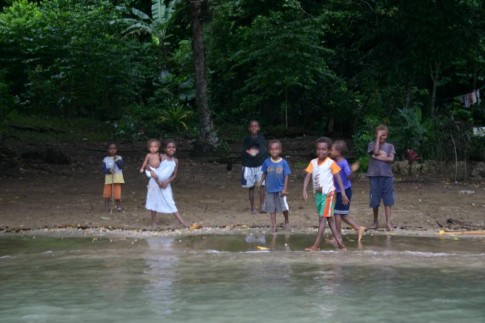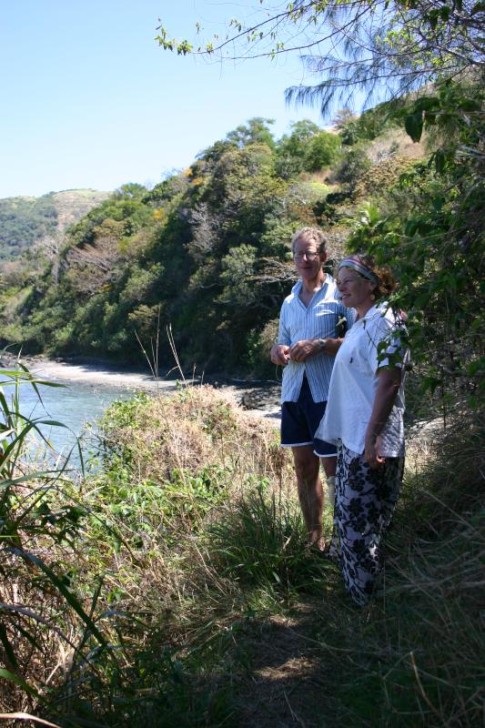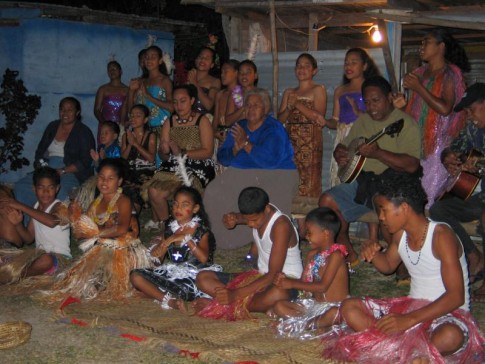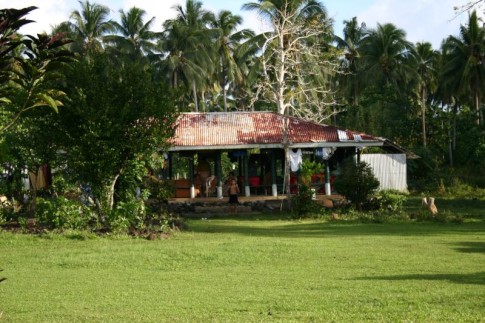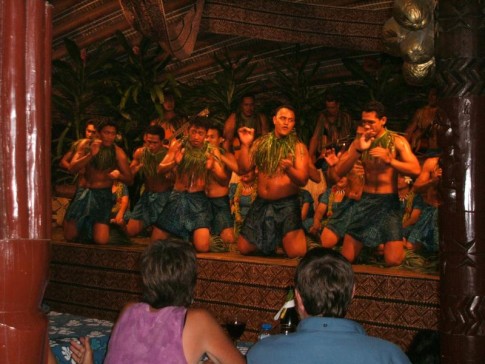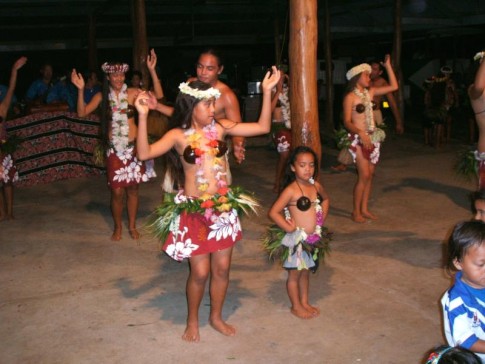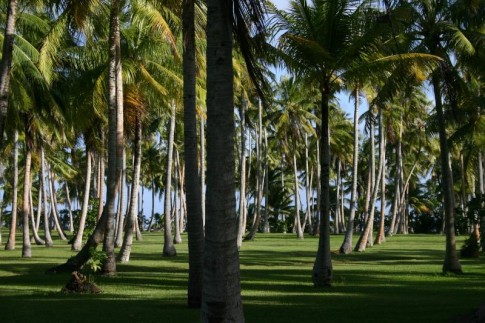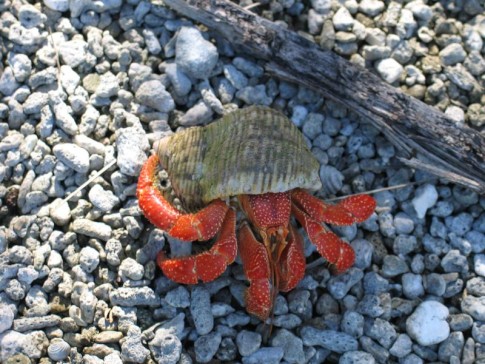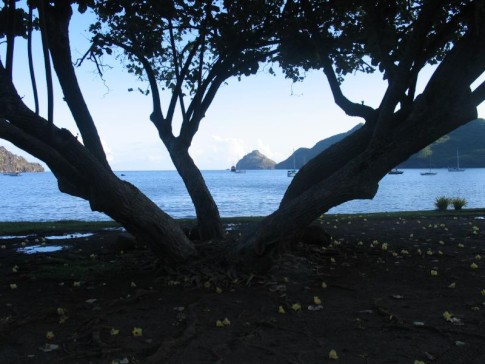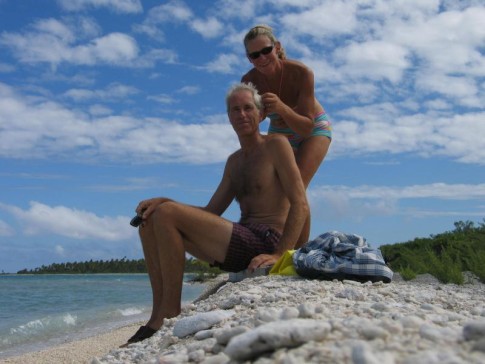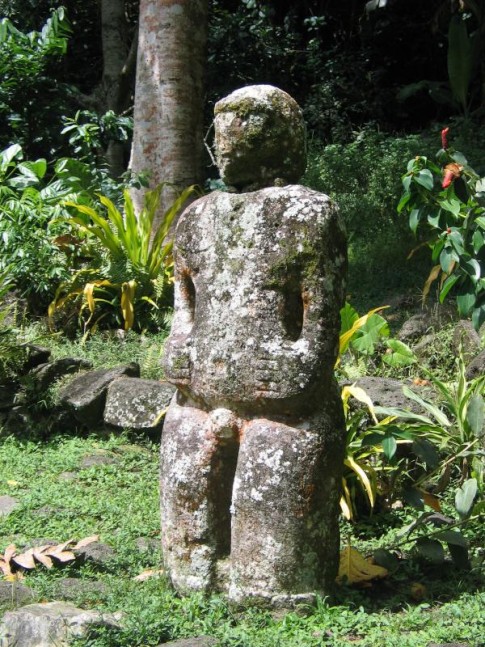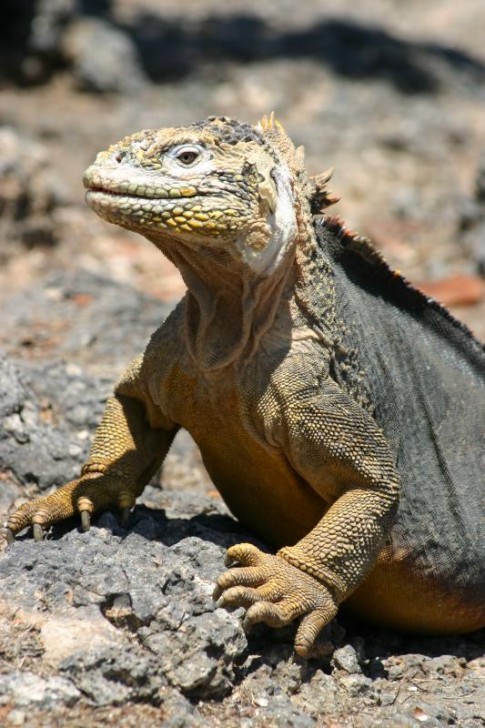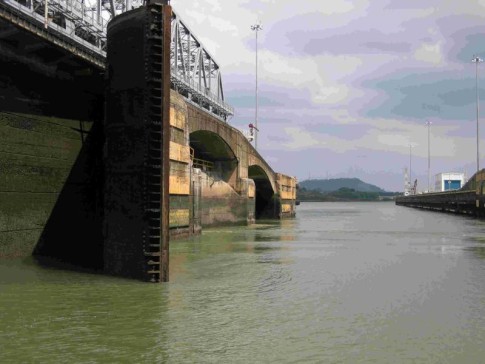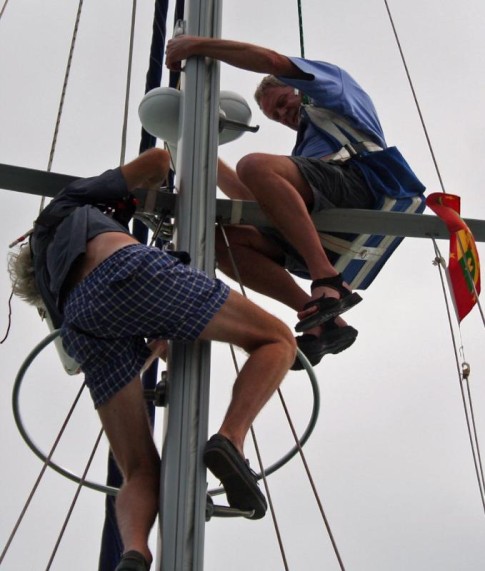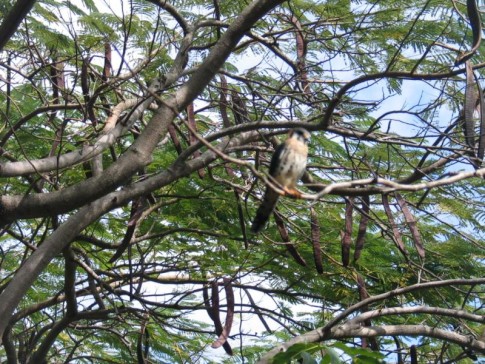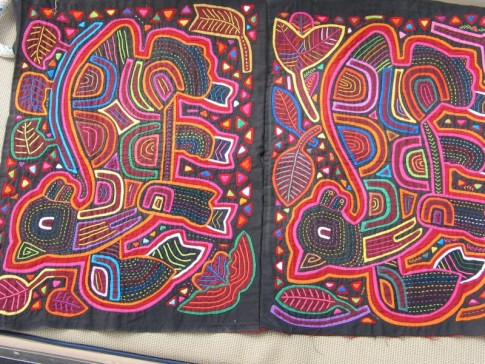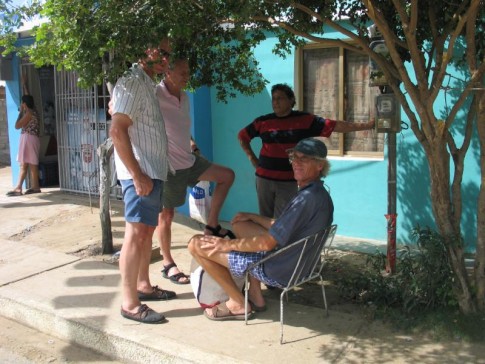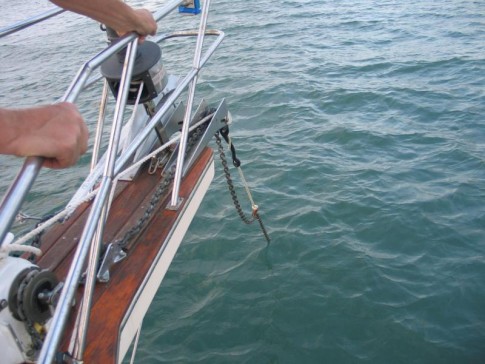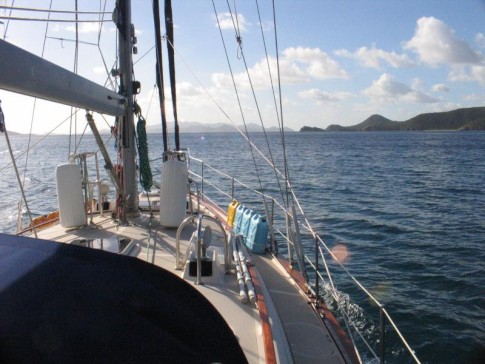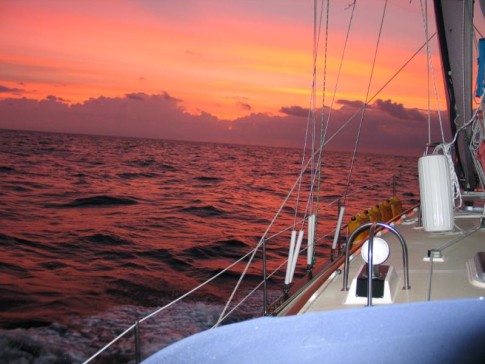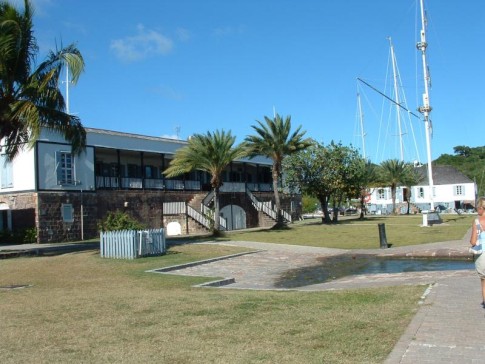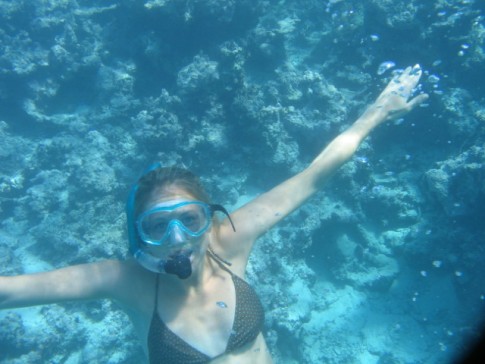
A Pacific circuit plus on Brother Wind
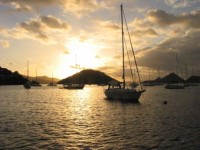
Who: Jo and Giles Winter
Port: Blakeney, Norfolk UK
Vaguely related links!
21 August 2019 | Sidney, Vancouver Island
06 August 2019 | Powell River
26 July 2019 | Campbell River
17 July 2019 | Port McNeil, Vancouver Island
05 July 2019 | Ketchikan
28 June 2019 | Petersburg, Alaska
17 June 2019 | Seward
04 June 2019 | Seward, Alaska
13 August 2018 | Kodiak town
16 July 2018 | Alaska
04 July 2018
25 June 2018
21 June 2018
17 June 2018 | North Pacific
01 June 2018 | Hakodate, Hokkaido, Japan
06 May 2018 | Mihonoseki
22 April 2018 | Marin Pia Marina, Kunasaki
30 March 2018 | Marin Pia Marina, Musashi, Oita
25 February 2015 | Puerta Galera, Mindoro island
07 February 2015 | Pinoy Boatyard Port Carmen
The happiest people on earth
11 October 2006 | Vanuatu
Jo
Vanuatu, formerly The New Hebrides has certainly lived up to its namesake, for we could have been sailing in a grey damp Scotland for the last two weeks! The people however, could not be more different!
The contrasts of Vanuatu and the extraordinary anomalies that make up the almost non existent infra-structure of these islands defies belief. Historically the country was administered jointly by the Brits and the French, which meant a duplication of everything bureaucratic. The most tangible evidence of which is the schools, some tiny villages have two schools, one English one French, while the more normal pattern is for alternate villages to have either French or English schools.
These islands already have more languages than any place on earth. The island of Malakula for instance has thirty languages alone! While the common language is pidgeon, or Bislama, a wonderfully phonetic and witty language that one can almost grasp. A lovely example of which is the Nambawan Caf�!
Vanuatu is the poorest country that we have visited by far, but Port Vila its capital is by contrast the chicest city/town we have been to since Tahiti.. There is no income tax, death duties, or inheritance tax, and consequently the islands have very little that relates to the 21st century; no electricity, in some cases no roads, rarely running water.
Almost every village has a primary school, which is compulsory between the ages of six and thirteen, after that optional secondary education is boarding. Each island has at least one secondary school. In Fiji, however poor and basic the village, there was always a smart concrete built school. Here, the school buildings are often indiscernible from their homes of bamboo and palm huts.
In spite of the imposition of a French or English school, most of the schools lack many of the basic materials. We dished out handfuls of pencils to each of the village chiefs, to pass on to the schools. These were very gratefully received.
Our first landfall in Vanuatu was at the island of Tanna, at the southern end of the chain. It has a very active volcano, which we visited in the company of several other yachties. We all piled into the back of a truck, standing room only, and off we bumped for an hour, on unmade roads.
Eventually, we drove across the black ash plains of the volcano, interspersed only with huge boulders of red larva. When the truck disgorged us, it was a short climb to the edge of the crater, accompanied by loud rumblings and billowing smoke. Once there, we stood at the edge of the crater, looking down into it, and watched until dusk fell, it was a sight that we will all long remember. At regular intervals there would be a huge growling roar, and billowing smoke, then a whoosh of red larva shooting heavenwards. Red hot rocks were hurled into the air, too many to track, I just took the view that if my number was up so be it! However, I was pleased not to know until later that some tourists had been killed there a couple of years previously.
From Tanna we moved northwards. Most of the islands are some distance apart, and do have very much their own identity as well as their own languages. In Ambrym, another island with an active volcano, we went to the village of Ranon, anchoring off a black sand beach. There Jeffrey came out in his dug-out to greet us. He explained that he had been appointed the harbour master, and would make arrangements for us to visit the village in the hills to see a Rom dance. This entailed a steepish climb for an hour, up to the neighbouring village of Fanla. There were no roads in either village, no electricity, and obviously no vehicles of any kind. Our delightful guide, took us up a lush valley, overhung with huge palm trees, mangos, banana and a superabundance of nature; regaling us as we went with stories of a variety of village tragedies largely relating to people being hit on the head by coconuts! Unlike some of the Pacific islands here one is deafened by birdsong, commonly the bright turquoise coloured wood pigeon.
The Rom dance is performed by the men of the village, and this was put on entirely for our benefit. One group wear tall brightly painted masks, and are dressed in voluminous cloaks of dried banana leaves. The other group of men, including the chief wear nothing but what is known as a penis wrapper, and a belt which the wrapped penis is suspended by!
The dance is accompanied by chanting, and the beating of a tam-tam, which are huge carved hewn out tree trunks, about ten foot tall. The lower section is hollowed out, while the top is carved into a mask. They are made from the wood of a Bread Fruit tree, which is very hard.
At Malakula, one of the other islands, we also saw traditional dancing; here the men wore tall conical hats for one of the dances, and their penis wrappers were of green banana leaves. The women also danced for us here, wearing nothing but grass skirts. It was not a pretty sight, as pendulous breasts of all ages swayed to the music. Whoever wanted to burn their bras should witness this. These poor women would surely benefit from the engineering of garments we take for granted!
Barter is used as much as money on the islands. There might be a village store with some of the bare essentials, sugar, flour, and rice, and maybe a few luxury items such as corned beef! Although all the islands have their own air field, this is way out of the realms of most of the people, and communication by boat is very expensive too, so a trip to Port Vila which is at least 100 miles from most of the islands, might be undertaken every few years at most.
We discovered that rope and t-shirts are great things to trade with. We gave presents sparingly, choosing to let the chief distribute things, but packs of cards were always received with a delighted smile. We hope that we've started a domino craze, as Flora and Hammy brought us out lots, but the people look at them with great wonderment!
The Ni-Vanuatu, as the people are known as are much less forthcoming than the overtly friendly Fijians. They will watch you carefully as you come ashore, and wait for you to make the first move, normally an outstretched hand to shake and telling them our names, and they then radiate friendliness. A visit to the village chief is obligatory, as is a polite request for permission to walk ashore and visit their village. They are a hard working, unspoilt people, whose Christianity sits comfortably alongside their old traditions, tabus and magic. Once again we feel very privileged to be on a yacht, pretty well the only way of being able to see a little of their country.
When I asked one young chap on the island of Erromango, who had walked us up his beautiful river valley, where only 130 years ago the first missionary was killed and eaten, and today healthy cattle graze by the river in a pastoral idyll, if he knew that there had been a survey which had concluded that the Ni-Vanuatu are the happiest people on earth. He was delighted and assured me this was so. I cannot think that the same question posed to the average Brit would receive anything but a negative response. It is a humbling fact that these people who have absolutely nothing, and every few years have their houses and crops decimated by a cyclone, still have that unadulterated God-given capacity for happiness.
The contrasts of Vanuatu and the extraordinary anomalies that make up the almost non existent infra-structure of these islands defies belief. Historically the country was administered jointly by the Brits and the French, which meant a duplication of everything bureaucratic. The most tangible evidence of which is the schools, some tiny villages have two schools, one English one French, while the more normal pattern is for alternate villages to have either French or English schools.
These islands already have more languages than any place on earth. The island of Malakula for instance has thirty languages alone! While the common language is pidgeon, or Bislama, a wonderfully phonetic and witty language that one can almost grasp. A lovely example of which is the Nambawan Caf�!
Vanuatu is the poorest country that we have visited by far, but Port Vila its capital is by contrast the chicest city/town we have been to since Tahiti.. There is no income tax, death duties, or inheritance tax, and consequently the islands have very little that relates to the 21st century; no electricity, in some cases no roads, rarely running water.
Almost every village has a primary school, which is compulsory between the ages of six and thirteen, after that optional secondary education is boarding. Each island has at least one secondary school. In Fiji, however poor and basic the village, there was always a smart concrete built school. Here, the school buildings are often indiscernible from their homes of bamboo and palm huts.
In spite of the imposition of a French or English school, most of the schools lack many of the basic materials. We dished out handfuls of pencils to each of the village chiefs, to pass on to the schools. These were very gratefully received.
Our first landfall in Vanuatu was at the island of Tanna, at the southern end of the chain. It has a very active volcano, which we visited in the company of several other yachties. We all piled into the back of a truck, standing room only, and off we bumped for an hour, on unmade roads.
Eventually, we drove across the black ash plains of the volcano, interspersed only with huge boulders of red larva. When the truck disgorged us, it was a short climb to the edge of the crater, accompanied by loud rumblings and billowing smoke. Once there, we stood at the edge of the crater, looking down into it, and watched until dusk fell, it was a sight that we will all long remember. At regular intervals there would be a huge growling roar, and billowing smoke, then a whoosh of red larva shooting heavenwards. Red hot rocks were hurled into the air, too many to track, I just took the view that if my number was up so be it! However, I was pleased not to know until later that some tourists had been killed there a couple of years previously.
From Tanna we moved northwards. Most of the islands are some distance apart, and do have very much their own identity as well as their own languages. In Ambrym, another island with an active volcano, we went to the village of Ranon, anchoring off a black sand beach. There Jeffrey came out in his dug-out to greet us. He explained that he had been appointed the harbour master, and would make arrangements for us to visit the village in the hills to see a Rom dance. This entailed a steepish climb for an hour, up to the neighbouring village of Fanla. There were no roads in either village, no electricity, and obviously no vehicles of any kind. Our delightful guide, took us up a lush valley, overhung with huge palm trees, mangos, banana and a superabundance of nature; regaling us as we went with stories of a variety of village tragedies largely relating to people being hit on the head by coconuts! Unlike some of the Pacific islands here one is deafened by birdsong, commonly the bright turquoise coloured wood pigeon.
The Rom dance is performed by the men of the village, and this was put on entirely for our benefit. One group wear tall brightly painted masks, and are dressed in voluminous cloaks of dried banana leaves. The other group of men, including the chief wear nothing but what is known as a penis wrapper, and a belt which the wrapped penis is suspended by!
The dance is accompanied by chanting, and the beating of a tam-tam, which are huge carved hewn out tree trunks, about ten foot tall. The lower section is hollowed out, while the top is carved into a mask. They are made from the wood of a Bread Fruit tree, which is very hard.
At Malakula, one of the other islands, we also saw traditional dancing; here the men wore tall conical hats for one of the dances, and their penis wrappers were of green banana leaves. The women also danced for us here, wearing nothing but grass skirts. It was not a pretty sight, as pendulous breasts of all ages swayed to the music. Whoever wanted to burn their bras should witness this. These poor women would surely benefit from the engineering of garments we take for granted!
Barter is used as much as money on the islands. There might be a village store with some of the bare essentials, sugar, flour, and rice, and maybe a few luxury items such as corned beef! Although all the islands have their own air field, this is way out of the realms of most of the people, and communication by boat is very expensive too, so a trip to Port Vila which is at least 100 miles from most of the islands, might be undertaken every few years at most.
We discovered that rope and t-shirts are great things to trade with. We gave presents sparingly, choosing to let the chief distribute things, but packs of cards were always received with a delighted smile. We hope that we've started a domino craze, as Flora and Hammy brought us out lots, but the people look at them with great wonderment!
The Ni-Vanuatu, as the people are known as are much less forthcoming than the overtly friendly Fijians. They will watch you carefully as you come ashore, and wait for you to make the first move, normally an outstretched hand to shake and telling them our names, and they then radiate friendliness. A visit to the village chief is obligatory, as is a polite request for permission to walk ashore and visit their village. They are a hard working, unspoilt people, whose Christianity sits comfortably alongside their old traditions, tabus and magic. Once again we feel very privileged to be on a yacht, pretty well the only way of being able to see a little of their country.
When I asked one young chap on the island of Erromango, who had walked us up his beautiful river valley, where only 130 years ago the first missionary was killed and eaten, and today healthy cattle graze by the river in a pastoral idyll, if he knew that there had been a survey which had concluded that the Ni-Vanuatu are the happiest people on earth. He was delighted and assured me this was so. I cannot think that the same question posed to the average Brit would receive anything but a negative response. It is a humbling fact that these people who have absolutely nothing, and every few years have their houses and crops decimated by a cyclone, still have that unadulterated God-given capacity for happiness.
Comments
| Vessel Name: | Brother Wind |
| Vessel Make/Model: | Island Packet 45 |
| Hailing Port: | Blakeney, Norfolk UK |
| Crew: | Jo and Giles Winter |
| About: | Rolling selection of friends and family |
| Extra: | Check my Instagram for pictures jogi_winter |
Brother Wind's Photos - Jo and Giles round the world on Brother Wind (Main)
|
From Taisha we moved northwards to Hakodate in Hokkaido, where we left the sea of Japan behind
17 Photos
Created 1 June 2018
|
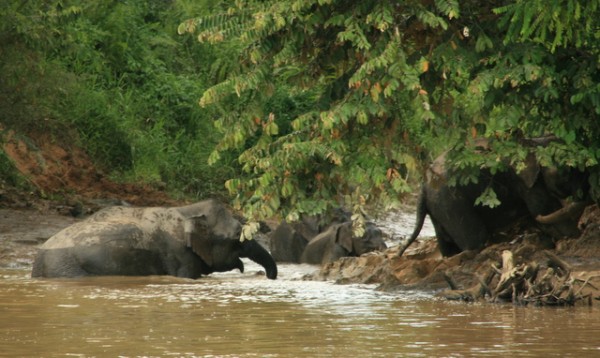 |
A trip up the Kinabatangan River in Brother Wind, with brother Jamie, wife Mel, and daughter Izzy
40 Photos
Created 23 August 2012
|
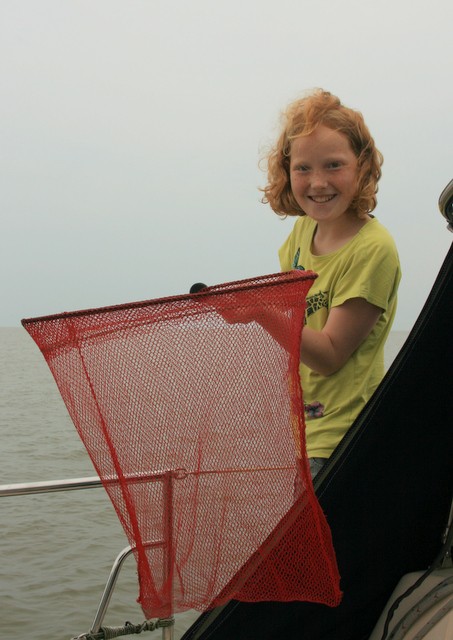 |
Jamie,Mel and Issy Cooper joined us in K-K, Sabah, for a dramatic trip north and then stunning islands followed by a trip up the Kinabatangan river
27 Photos
Created 12 August 2012
|
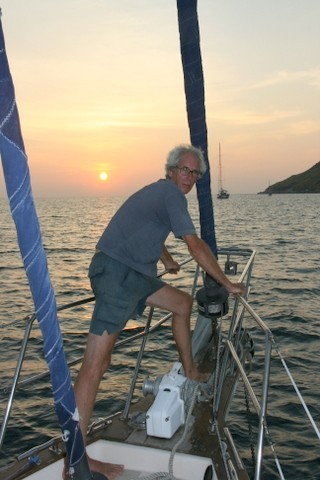 |
our trip back to Langkawi from the Andamans, with Mike and Laurian Cooper on board
15 Photos
Created 28 March 2011
|
A Pacific circuit plus on Brother Wind

Who: Jo and Giles Winter
Port: Blakeney, Norfolk UK






